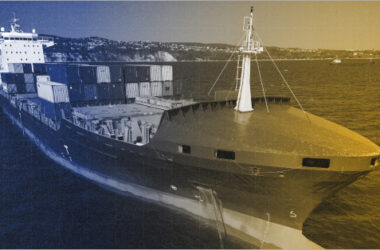As far as transportation of cargo and goods is concerned, the sea has been both the door of all possibilities and the stage of risks. Ships have been used by merchants and traders over centuries to deliver cargo and goods across oceans. However, with every opportunity comes uncertainty. An entire shipment could be destroyed by a storm, fire, collision, or even piracy. Here is where Marine Insurance policies in India come in–providing a financial safety net against unexpected hazards during transportation of goods along any medium- sea, land or air.
However, when it comes to Marine Insurance, every loss is not treated equally. There is a distinct difference between total loss and partial loss, as drawn by law and insurers. This difference is not only of academic importance but it has a direct impact on the settlement of claims, compensation and ultimately, on the survival of businesses dealing in trade and transportation.
This blog will discuss the meaning of total and partial loss in the context of Marine Insurance, their differences, and the reason why understanding this difference could save your business from financial setbacks.
Marine Insurance: In a Nutshell
Marine Insurance is among the oldest forms of insurance with its origins dating back to maritime European traders. In India, it is regulated mainly by the Marine Insurance Act, 1963- provisions of which form the basis of the rights, liabilities, and claim settlement procedure.
In simple terms, Marine Insurance covers ship, cargo, freight and other interests against losses or damages due to maritime perils. These risks can include natural disasters like storms and cyclones, or accidents like ship collisions, fire, sinking or even human risks like theft and piracy.
Marine Insurance is critical to Indian businesses, especially for exporters and importers. As India is one of the largest maritime countries globally, handling more than 95% of its trade by volume through shipping, securing goods in transit is no luxury these days. Rather, it’s a necessity.
Different types of Marine Insurance policies include:
- Cargo Insurance (covers goods in transit).
- Hull Insurance (covers the vessel itself).
- Freight Insurance (protects freight revenue).
- Liability Insurance (covers liabilities to third parties).
But within every Marine Insurance Policy lies a crucial question: what happens if the goods are lost or damaged? This brings us to the concept of losses.
The Concept of Loss in Marine Insurance Policies
In insurance coverage terms, a loss refers to damage, destruction, or financial harm caused by an insured peril. In Marine Insurance, losses are broadly classified into total loss and partial loss.
The Marine Insurance Act, 1963, makes this distinction to ensure clarity in Marine Insurance claim settlement. Total loss refers to situations where the insured subject matter is either completely destroyed or so badly damaged that it ceases to exist in its original form. Partial loss, on the other hand, covers cases where damage occurs but does not wipe out the entire value of the insured subject.
These categories determine the extent of compensation and the liability of insurers, making it vital for businesses to know where their loss falls.
Total Loss in Marine Insurance
A total loss occurs when the insured subject (cargo or vessel) is destroyed completely or is so damaged that it becomes unusable, irretrievable, or beyond economical repair.
Different Types of Total Loss
- Actual Total Loss (ATL)
- This occurs when the insured goods or ship are completely destroyed.
- Examples include a ship sinking in deep waters with all cargo onboard, or a fire that completely consumes the shipment.
- In legal terms, it also includes situations where goods are irretrievably lost, such as cargo washed away at sea and never recovered.
- Constructive Total Loss (CTL)
- This occurs when the cost of recovering or repairing the goods or ship exceeds their actual value.
- For instance, if a vessel is stranded and the cost of bringing it back to port and repairing it is more than its market worth, the insured can abandon the goods and claim a constructive total loss.
- CTL allows policyholders to treat a heavy but not complete loss as total, preventing unnecessary financial strain.
Here is an example to make it clear to you:
Imagine an Indian exporter shipping machinery to Europe. If the vessel sinks in the Arabian Sea and the machinery is irretrievable, that’s an actual total loss. If the machinery is recovered but is so badly rusted and damaged that repairs cost more than buying new machines, it becomes a constructive total loss.
Partial Loss in Marine Insurance Coverage
A partial loss occurs when the subject matter of insurance is damaged but not completely destroyed. Unlike total loss, the goods retain some value, and the insured recovers compensation only for the portion lost.
Different Types of Partial Loss
- Particular Average Loss
- Loss or damage borne solely by the owner of the goods or ship.
- Example: Cargo of cotton bales gets soaked in seawater while other goods on the ship remain intact. Only the owner of the cotton bears the loss and claims insurance.
- General Average Loss
- A voluntary sacrifice made for the common safety of the ship and cargo.
- Example: During a storm, the captain decides to jettison (throw overboard) part of the cargo to lighten the ship and save it. The resulting loss is shared proportionately by all cargo owners and stakeholders.
Here is an example to make it clear to you:
If an importer in India receives a shipment of electronic goods where 20% are damaged due to seawater seepage, it qualifies as a particular average loss. On the other hand, if part of the cargo is deliberately sacrificed to save the entire ship during a storm, it’s treated as a general average loss.
Differences Between Total Loss and Partial Loss in Marine Insurance
The differences between total loss and partial loss form the backbone of Marine Insurance claims.
| Basis of Difference | Total Loss | Partial Loss |
| Nature of Loss | Entire destruction or irretrievable loss of subject matter | Damage or loss to a part of subject matter |
| Types | Actual Total Loss (ATL), Constructive Total Loss (CTL) | Particular Average Loss, General Average Loss |
| Compensation | The insurance provider pays full insured value | The insurance provider pays proportionate compensation |
| Claim Approach | Abandonment allowed in CTL cases | No abandonment allowed |
| Impact on Trade | Severe financial consequences if uninsured | Manageable financial hit if insured |
For businesses, the difference can decide whether they recover the entire value of their shipment or only a fraction.
Marine Insurance Claim Settlement in Total Loss and Partial Loss
Claim settlement under Marine Insurance policies in India involves detailed documentation, surveys, and assessment by insurers.
Steps in Marine Insurance Claim Settlement:
- Notice of Loss – The insured must notify the insurer immediately after the loss occurs.
- Appointment of Surveyor – Insurers appoint licensed surveyors to assess the nature and extent of loss.
- Submission of Documents – Essential documents may include:
- Marine Insurance Policy copy
- Invoice and packing list
- Bill of lading
- Survey report
- Claim form and letter of subrogation
- Assessment and Settlement – Based on the surveyor’s findings, insurers classify the loss as total or partial and settle compensation accordingly.
In total loss, the insurer will pay the full insured amount. In partial loss, the amount of compensation is proportional to the loss or damage. The Marine Insurance Act, 1963, provides directions to both the insurers and the insured regarding the precise settlement process.
Why Should Businesses Understand these Loss Types?
In the context of Indian businesses involved in local and foreign trade, the differentiation between total and partial loss is not mere legal jargon—it’s a financial lifeline.
- Risk Management: Understanding the nature of loss assists the businesses to assess the risks and choose the appropriate coverage.
- Financial Planning: Under total loss and partial loss, compensation varies greatly. Awareness of the same eliminates ugly surprises when settling insurance claims.
- Policy Selection: Exporters and importers are able to select policies (such as covering general average contributions) to cater to their specific risk exposure.
- Global Trade Compliance: Most International trade agreements and Incoterms stipulate that businesses need to know and insure against both these forms of loss.
As an example, an Indian exporter who sells goods via the CIF (Cost, Insurance, and Freight) terms has to make sure that his or her insurance covers any partial losses because customers expect to receive compensation even in case of minor losses.
The Bottomline:
Marine trade could be as old as civilization itself and the risks of marine trade are, perhaps, as real today as they were centuries ago. Ships can be sturdier and more technologically developed these days. But, storms, accidents, and piracy are here to stay. This is why Marine Insurance remains an important tool in ensuring protection of trade.
The difference between complete loss and partial loss in Marine Insurance in India is not a mere technical issue. In fact, it determines the destiny of the claims, compensation and business survival. Complete loss annihilates the insured subject, whereas partial loss brings a chance to recover only a part of the total value. Each has its own specific implication to businesses operating through the Indian trade routes.
To exporters, importers and logistics companies, the knowledge of these differences is the roadmap that will help them navigate through the turbulent waters. An appropriately selected Marine Insurance Policy will make sure that when the waves strike the ship, your business does not go down with it.








